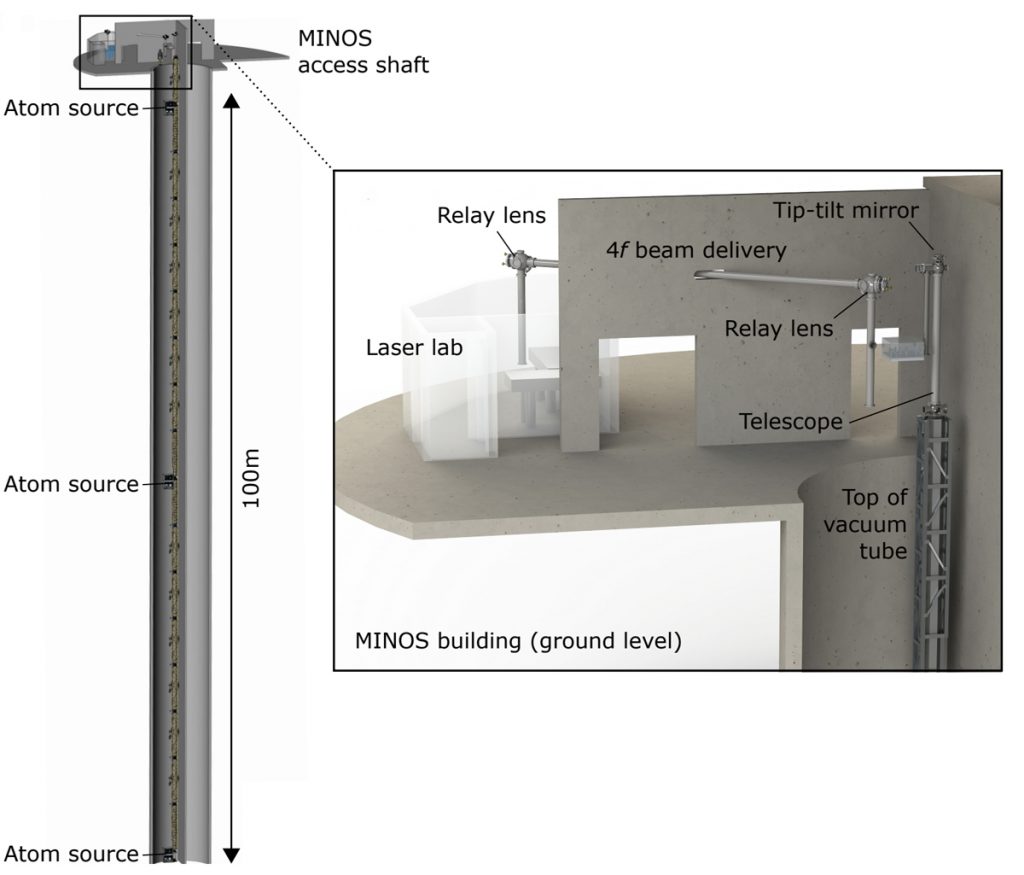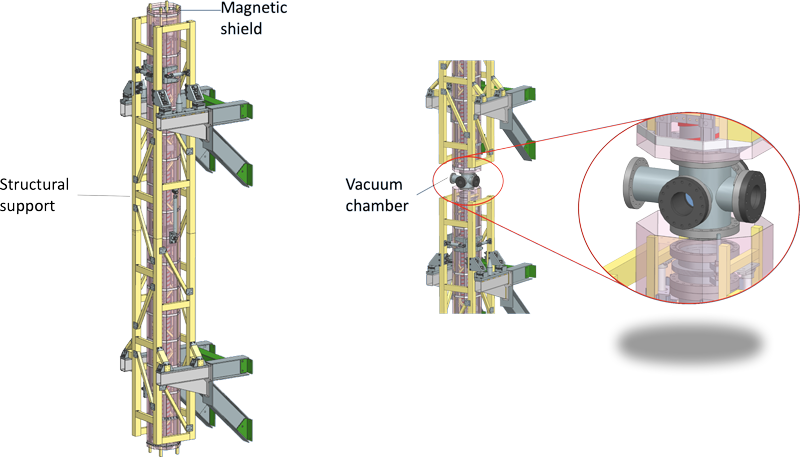The world’s largest atom interferometer
MAGIS-100 will be the world’s largest atom interferometer. One of the better known interferometers is LIGO, a National Science Foundation-supported instrument that detects gravitational waves by splitting a light wave in half and sending them along two equal-length arms. A difference in arrival time indicates that a gravitational wave has passed through and distorted space. In a similar way, an atom interferometer measures that difference using atomic waves.

As clouds of atoms shower down the MAGIS-100’s vacuum tube, a laser light will travel from one end of the tube to another and back, which will enable the measurement of the different atomic phases that result from light interacting with a single atom. Unlike typical atom interferometers, which use rubidium atoms, MAGIS-100 will use strontium atoms.
Strontium atoms are currently found in the world’s best atomic clocks. When a laser interacts with a strontium atom, it can be energized for minutes, rather than nanoseconds, as is the case with rubidium atoms. This increased lifetime makes strontium ideal for atomic clocks — and for atom interferometers like MAGIS-100.

